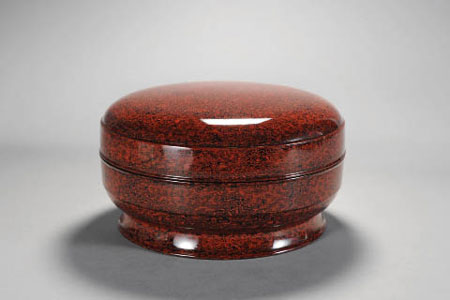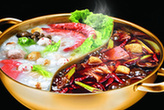 |
Pineapple lacquer bodiless round box made by Gan Erke. |
GAN Erke was born in 1955 in Huangshan, Anhui Province. Today, Gan has considerable expertise in painting, carpentry, carving, and traditional lacquer techniques. Over the last three decades he has been instrumental in revitalizing the Huizhou “pineapple lacquer” tradition. Gan has also played an important role in bringing a local strand of lacquer inkslab art back from the brink of extinction.
In 2006, Gan Erke was awarded the title of “inheritor of Huizhou lacquer art,” which is recognized as a Chinese intangible cultural heritage. The year 2011 saw Gan’s Red Inlaid Gold Pineapple Lacquer Round Box enter the Palace Museum collection in Beijing.
Huizhou in southern Anhui Province was historically an economic and cultural hub. Raw lacquer was especially abundant in Huizhou thanks to a local tree species called Anacardiaceae (“Lacquer Tree” colloquially).
Lacquerware in China dates back to the 13th century B.C. As a natural chemical material, raw lacquer used as a finish can resist humidity, high temperatures and erosion. The application process also results in the lacquer acquiring a mixture of colors, meaning the material has artistic, as well as practical value.
Chinese lacquer art was refined considerably in the period between the 10th century and 19th century. Many places in China became famous for their lacquer art, including Beijing, and Anhui, Guangdong, Fujian, Jiangsu and Shanxi provinces. During the period lacquer techniques also spread to Japan and Southeast Asia, greatly influencing folk arts and crafts in those places.





Why not rent a boyfriend, or girlfriend to please parents during the Spring Festival?